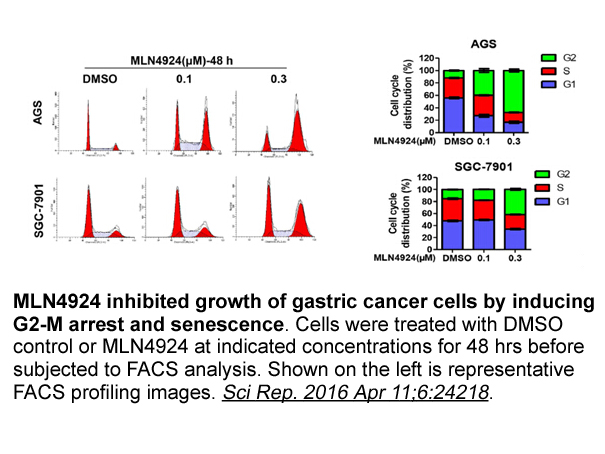Archives
Recent findings imply that proper Na K ATPase
Recent findings imply, that proper Na+/K+-ATPase function is crucial for unimpaired development of the vertebrate heart. Targeted knockout of Na+/K+-ATPase α1 in mice led to early embryonic lethality whereas heterozygous knockout mice displayed severe hypocontractile hearts [52]. Pharmacological inhibition of the Na+/K+-ATPase by Ouabain in chick embryos was also found to disrupt early heart development [53]. Accordingly, complete loss of Na+/K+-ATPase α1-subunit function (ATP1A1A.1) as observed in the zebrafish mutants heart and mind or small heart led to small, dysmorphic hearts, diminished cardiac contractility, bradycardia as well as a severely curved body axis [41,42], underlining the essential role of the Na+/K+-ATPase α1-subunit in early cardiac development. Interestingly, similar to heart and mind and small heart mutants, hip mutant embryos displayed severely reduced heart rate starting 48 hpf, but neither defective cardiogenesis nor impaired body axis formation were present in homozygous hip mutant embryos, suggesting hip, in contrast to the zebrafish mutants heart and mind or small heart, not to be a null allele. In addition, measurement of myocardial fractional shortening in hip mutants was comparable to wild-type siblings, indicating that hipN851K has no impact on contractile function. These substantial structural and functional differences between hip mutants and small heart as well as heard and mind mutants might be caused due to more pronounced effects of the corresponding mutations on Na+/K+-ATPase pump activity. Since the other mutations heart and mind and small heart induce either a stop cetp inhibitor or a deletion of several nucleobases resulting in a prematurely truncated α1-subunit protein, heart and mind and small heart are considered to cause a complete loss of Na+/K+-ATPase ion pump function. Accordingly, phenocopy of hip-typical bradycardia by morpholino-mediated gene knockdown in wild-type zebrafish embryos was already achieved with low morpholino concentrations, whereas high concentrations exert structural and functional alterations as observed in the reported zebrafish mutants small heart and heart and mind. Hence, we conclude that the  hip allele is a hypomorphic allele rather than a null allele leading to partial loss of Na+/K+-ATPase ion transport capacity. Thus, the null-allelic mutant lines small heart or heart and mind might be useful animal models to study genetic underpinn
hip allele is a hypomorphic allele rather than a null allele leading to partial loss of Na+/K+-ATPase ion transport capacity. Thus, the null-allelic mutant lines small heart or heart and mind might be useful animal models to study genetic underpinn ings of zebrafish development, whereas the hypomorphic hip mutant is the first animal model enabling detailed dissection of the essential role of Na+/K+-ATPase α1-subunit and its pump currents in regulating vertebrate heart rhythm.
Mutations in ion transporting proteins often cause impaired ion transport capacity caused by degradation of mutated RNA/protein or diminished membrane trafficking of mutant ion channel proteins [38,54,55]. For instance, protein trafficking defects diminish membrane localization of the human-ether a-go-go-related gene channel (hERG) to the cell surface membrane and have emerged as a common disease mechanism in humans with long QT syndrome 2 (LQTS) [56,57]. Several studies on LQTS2 mutation demonstrated that trafficking-defective hERG protein is located predominantly intracellular, especially in the endoplasmatic reticulum [58,59].
In contrast, we here found that neither Na+/K+-ATPase mRNA nor protein stability seem to be affected by the hip mutation. Since the hip mutation is located in the transmembrane 7 of the Na+/K+-ATPase α1-subunit, which is known to play an essential role in Na+/K+-ATPase membrane trafficking [43,60,61], we also analyzed protein trafficking qualitatively and found that Na+/K+-ATPaseN851K is predominantly detected in the cell membrane in vitro. Although quantitative assessment of Na+/K+-ATPase membrane localization by biochemical techniques or surface biotinylation would have been preferable to analyze Na+/K+-ATPase membrane trafficking, our findings insinuate that hipN851K might affect intrinsic enzyme activity of Na+/K+-ATPase rather than mRNA stability or cellular membrane trafficking. Next to its essential role for regular membrane trafficking, the Na+/K+-ATPase transmembrane domain 7 essentially modulates sodium and potassium binding affinity. Furthermore, the Na+/K+-ATPase C-terminus (including TM7) is considered to interact with FXYD that is known to associate with Na+/K+-ATPase and to regulate its ion transport capacity [[62], [63], [64]].
ings of zebrafish development, whereas the hypomorphic hip mutant is the first animal model enabling detailed dissection of the essential role of Na+/K+-ATPase α1-subunit and its pump currents in regulating vertebrate heart rhythm.
Mutations in ion transporting proteins often cause impaired ion transport capacity caused by degradation of mutated RNA/protein or diminished membrane trafficking of mutant ion channel proteins [38,54,55]. For instance, protein trafficking defects diminish membrane localization of the human-ether a-go-go-related gene channel (hERG) to the cell surface membrane and have emerged as a common disease mechanism in humans with long QT syndrome 2 (LQTS) [56,57]. Several studies on LQTS2 mutation demonstrated that trafficking-defective hERG protein is located predominantly intracellular, especially in the endoplasmatic reticulum [58,59].
In contrast, we here found that neither Na+/K+-ATPase mRNA nor protein stability seem to be affected by the hip mutation. Since the hip mutation is located in the transmembrane 7 of the Na+/K+-ATPase α1-subunit, which is known to play an essential role in Na+/K+-ATPase membrane trafficking [43,60,61], we also analyzed protein trafficking qualitatively and found that Na+/K+-ATPaseN851K is predominantly detected in the cell membrane in vitro. Although quantitative assessment of Na+/K+-ATPase membrane localization by biochemical techniques or surface biotinylation would have been preferable to analyze Na+/K+-ATPase membrane trafficking, our findings insinuate that hipN851K might affect intrinsic enzyme activity of Na+/K+-ATPase rather than mRNA stability or cellular membrane trafficking. Next to its essential role for regular membrane trafficking, the Na+/K+-ATPase transmembrane domain 7 essentially modulates sodium and potassium binding affinity. Furthermore, the Na+/K+-ATPase C-terminus (including TM7) is considered to interact with FXYD that is known to associate with Na+/K+-ATPase and to regulate its ion transport capacity [[62], [63], [64]].